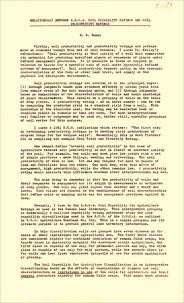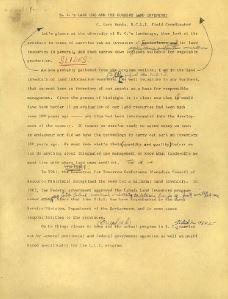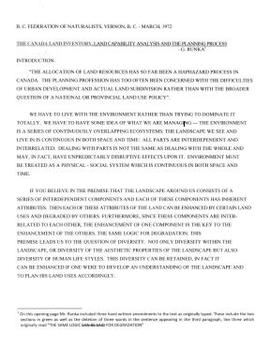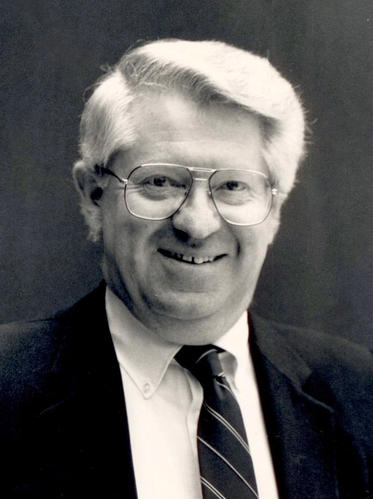Title and statement of responsibility area
Title proper
General material designation
- Textual record
- Graphic material
- Cartographic material
- Electronic record
- Sound recording
Parallel title
Other title information
Title statements of responsibility
Title notes
Level of description
Reference code
Edition area
Edition statement
Edition statement of responsibility
Class of material specific details area
Statement of scale (cartographic)
Statement of projection (cartographic)
Statement of coordinates (cartographic)
Statement of scale (architectural)
Issuing jurisdiction and denomination (philatelic)
Dates of creation area
Date(s)
-
1945-2013 (Creation)
- Creator
- Runka, G. Gary
-
1973-2021 (Creation)
- Creator
- Sawicki, Joan Marie
Physical description area
Physical description
20 m of textual records and other material
- 7423 photographs
- 246 GB of electronic records
- 22 audio cassettes
- 516 maps
- 5 objects
- 1 film reel
Publisher's series area
Title proper of publisher's series
Parallel titles of publisher's series
Other title information of publisher's series
Statement of responsibility relating to publisher's series
Numbering within publisher's series
Note on publisher's series
Archival description area
Name of creator
Biographical history
Gary Runka’s contribution to land inventory, agriculture, natural resource management and land use planning helped shape British Columbia land use policy over five decades. Best known for his guiding role in the creation of BC’s Agricultural Land Reserve (ALR), Gary Runka was the first General Manager of the Land Commission and later Chair of the (renamed) Agricultural Land Commission. Throughout his career, Gary remained committed to field knowledge as the basis for understanding and resolving land and water use issues. Described by colleagues as “one of the most highly respected agrologists in our profession” and “one of [BC’s] most dedicated and influential land use planners”, Runka spent his 52-year career working on an incredible number of landmark projects in British Columbia.
Gary Runka was born August 2, 1938 and grew up in Baldonnel, near Fort St. John in the Peace River area of British Columbia. Growing up on a farm homesteaded by his parents, Bill and Velma Runka, Gary developed an early and deep connection to agriculture and the natural environment. Gary played baseball, hockey, curling and later in university, football. He married Celia Runka née Zitko (31 Dec. 1938 – 6 Feb. 2014) in 1962 and they had two daughters, Shaundehl Marie and Cayla Renee. The marriage ended in 1973.
Gary’s early employment included work on legal land surveys and a petroleum exploration survey. These experiences tweaked Gary’s interest and steered him toward a career in land science and management. He attended the University of British Columbia, graduating in 1961 with a Bachelor of Science degree in Agriculture majoring in Soil Science. Upon graduation, he took a position as Pedologist with the BC Department of Agriculture in Kelowna (1961-1966), mapping soils throughout the province and providing soil and land use interpretations for tax assessment, forest management, irrigation engineering and agricultural development. He briefly interrupted his career to complete a Masters of Science degree in Natural Resource Management and Land Use Planning from Cornell University, graduating in 1967. Upon returning to British Columbia and the BC Department of Agriculture, he was appointed BC Land Inventory Field Coordinator (Agriculture and Forestry) for the Canada Land Inventory program (1967-1973). In 1968, Gary became the owner of a cereal/forage seed/oil seed farm near Fort St. John, which included part of the family farm. He continued to manage this farm until generational transfer in 2005.
In 1972, the people of British Columbia elected an NDP government. Among the several significant programs the new government introduced, including a government-owned vehicle insurance company (ICBC), a provincial ambulance service and a community college system, arguably the most dramatic and controversial of all was the “land freeze” imposed on December 21, 1972 (OIC 4483/72). Intended to protect what remained of BC’s scarce agricultural land, OIC 4483/72 and its companion OIC 159/73 (January 18, 1973) halted further subdivision and non-farm use of farmland in BC. The subsequent passage of the Land Commission Act on April 18, 1973 began the process of designating approximately 47,000 square kilometres (18,000 sq mi) of land with the soil/climate combination to support food production as BC’s Agricultural Land Reserve (ALR). At the time, it was considered the most progressive piece of planning legislation of its kind in North America and to this day, continues to remain a model looked to by many other jurisdictions that continue to lose their valuable agricultural land to non-farm development.
Gary Runka was appointed the first General Manager of the BC Land Commission via Order in Council 2570/73 on August 1, 1973, about 2.5 months after the appointment of the original five-person Commission. A combination of background, education and work experience made Gary uniquely qualified to guide the Commission through its formative years. He held this position until July 24, 1975 when he was appointed Member and Chair of the then renamed Agricultural Land Commission (OIC 2445/75), replacing W.T. Lane, the first Commission Chairman.
During this period, Gary married his second wife, Joan Marie Sawicki (18 Sept. 1945 – present). They had met while both were working with the Canada Land Inventory and Joan subsequently joined the staff at the BC Land Commission to work on the original ALR boundaries.
Gary never wavered in his dedication to safeguarding BC’s agricultural land resource. In 1979, when the government overruled the Land Commission and allowed the exclusion of over 250 acres from the ALR in Langley for industrial development, Gary stuck to his principles and resigned. The ensuing controversy damaged the reputation of the political leadership but was eventually regarded as one of the contributing factors to the continued survival of the ALR.
Upon leaving the Agricultural Land Commission, Gary established his own consulting firm, appropriately named G.G. Runka Land Sense Ltd. Joan was a business partner in the company until her election in 1991 as an NDP Member of the Legislative Assembly of British Columbia, representing Burnaby-Willingdon. During Joan’s decade as an elected MLA, Gary’s daughter Shaundehl worked with him on Land Sense Ltd. projects.
Over the next 34 years, Gary worked with 681 clients, including all levels of governments, corporations, First Nations, non-government organizations, learning institutions and private individuals. Whether the project was land inventory, community planning, environmental assessment, policy development, land and water use regulation or resource use conflict resolution, Gary always approached planning from the ground up, combining his understanding of natural systems and ecological processes with his diplomatic skills at bringing people of diverse opinions together to solve problems in the long-term public interest. Gary was recognized as a skilled and respected facilitator of complex land use planning issues throughout his career. He left a great legacy to the land, water, and people of British Columbia by helping decision makers and communities make good decisions and establish good policies.
It was just such talents that The Nature Trust of British Columbia needed for an innovative project they undertook during the 1990’s. In an effort to conserve some of the unique biological resources of the South Okanagan, one of the three most endangered ecosystems in Canada, the Trust purchased a number of small private holdings along with three ranches that included substantial associated Crownland grazing leases and licenses. The big challenge then was to derive an overall management plan for the thousands of acres of secured habitat. Gary Runka was ideally suited to the task. After countless collaborative days and months spent sorting out land status designations, reaffirming resource capabilities and resolving competing objectives of diverse interest groups, the final product, which Gary coined "Biodiversity Ranches", was heartily endorsed by all of the stakeholders - including the ranchers who are still managing these properties today.
During the 1990s, Gary also played a key role in yet another ambitious BC land use planning initiative, the Commission on Resources and the Economy (CORE) and subsequent Land and Resource Management Plans (LRMPs). As facilitator for several of these processes, including in the East Kootenays, Bulkley Valley, Anahim and Charlotte-Alplands, Cassiar/Iskit/Stikine and, perhaps the most challenging of all, Central Coast, Gary’s legendary geographical memory, integrative abilities and diplomatic skills helped guide these multi-sector tables to consensus. British Columbians, both present and future, will forever benefit from the doubling of parks and protected areas that was one of the key products of this monumental planning exercise.
In July 2001, after 30 years of residency in Burnaby, Gary Runka and Joan Sawicki embraced a lifestyle change, moving to Stuie, BC, in Tweedsmuir South Provincial Park, while retaining an urban base at their Vancouver condominium. Gary and Joan continued their G.G. Runka Land Sense Ltd. consulting work in addition to their involvement in numerous professional and grassroots organizations.
On July 26, 2013, Gary Runka died suddenly and unexpectedly while walking with Joan near their home in Stuie. At the time of his death, Gary was preparing his expert witness testimony in defense of the prime agricultural lands that would be lost with the building of the Site C dam near Fort St. John - a mere few kilometres away from the farm where he grew up. Gary was honoured posthumously for his contributions to sustainable land use in BC with the 2014 Land Champion award from the Real Estate Foundation of BC. Throughout his career, he was also the recipient of the B.C. Institute of Agrologists’s "Agrologist of the Year" award in 1978 and a Fellowship with the Agricultural Institute of Canada in 1990.
Name of creator
Biographical history
Joan Sawicki was born in Vancouver, British Columbia in 1945 and spent her early years on a small family farm in Burnaby. In 1956, the family moved to Terrace, B.C. Upon high school graduation, Joan attended the University of Victoria earning a Bachelor of Education degree in 1968, majoring in History and Geography.
During her university years, Joan developed an interest in agriculture, environment and land use planning while working with the Canada Land Inventory, both in Victoria and Ottawa. She was a secondary school teacher in Williams Lake 1968-1969 and in Armstrong 1972-1973 before joining the Land Commission staff in 1973 to work on establishing the original Agricultural Land Reserve boundaries. Joan Sawicki married Gary Runka in 1978 and joined him as a partner in G.G. Runka Land Sense Ltd. consulting firm in 1979.
From 1987 to 1990, Joan Sawicki served on Burnaby City Council. She chaired the environment and waste management committee and sat as a municipal representative on the Greater Vancouver Regional District waste management committee and the Metropolitan Board of Health.
After failing to win a seat in the provincial legislature representing the NDP in Burnaby-Willingdon during the 1986 election, Joan Sawicki was elected in that riding in 1991, and re-elected in 1996. Under the Premier Harcourt government, Joan Sawicki was appointed Speaker of the Legislative Assembly in March 1992, serving for two years. After leaving the Speaker’s chair, Joan served as Parliamentary Secretary to the Minister of Municipal Affairs (April 1994 to May 1996), focusing on the Georgia Basin Initiative and serving on the board of the International Centre for Sustainable Cities.
Upon re-election in 1996, Joan was appointed Parliamentary Secretary to the Minister of Environment, Lands and Parks (June 1996 to January 1998) and charged with the task of expanding BC’s beverage container deposit/refund system. She resigned from that position when her government invoked the Provincial Interest clause to allow exclusion of land from the Agricultural Land Reserve for a proposed development project at Six Mile Ranch near Kamloops.
In July 1999, Premier Glen Clark named Joan Sawicki to cabinet as Minister of Environment, Lands, and Parks, during which time she championed a Green Economy Initiative and Sustainability legislation. She retained her portfolio under Premier Ujjal Dosanjh until November 1, 2000 after she had announced she would not be seeking re-election in 2001.
Upon retirement from elected politics, Joan returned to land use consulting work through G.G. Runka Land Sense Ltd. Upon her husband’s death, Joan completed their work opposing the loss of prime agriculture land due to the Site C dam. Joan served on the board of directors for Nature Conservancy of Canada, BC Region from 2004 to 2010 and continues to be active on environmental issues, including volunteering with BC Parks and other non-profit organizations.
Scope and content
This fonds illustrates the life and work of G. Gary Runka and his contributions to the province of British Columbia. Gary Runka was the first General Manager of British Columbia's Agricultural Land Commission and helped establish the provincial Agricultural Land Reserve. After transitioning from a government career to private consulting, Runka provided comprehensive professional services through his land consultancy business, G.G. Runka Land Sense Ltd., offering land capability and environmental assessments, integrated resource management, land and water use conflict resolution, and interdisciplinary land use planning. Described by colleagues as one of BC's most highly respected agrologists and influential land use planners, Runka had a 52-year career working on (or against) an incredible number of landmark projects in British Columbia, such as the Site C Project. Gary Runka’s partner in life and vocation, Joan M. Sawicki, worked with Gary on many of these projects—as well as her own; her contributions are also represented throughout the records of this fonds.
Gary Runka's deep connection to the land is evident from his earliest papers on aerial photo interpretation, his work with the Canada Land Inventory, through his speeches and his work establishing the BC Agricultural Land Reserve and in his subsequent consulting career through G.G. Runka Land Sense Ltd. Gary Runka's influence and legacy was recognized in the tributes paid after his death, including the post-humus award as the Real Estate Foundation's "Land Champion" for 2014.
The G. Gary Runka fonds has been divided into the following nine series:
1) Personal Records
2) Speeches & Publications
3) Professional Records
4) Agricultural Land Commission
5) Land Sense Ltd.
6) Client Files
7) Maps
8) Photographs
9) Digital Records
Notes area
Arrangement
Original order retained, with exceptions.
Language of material
- English
Script of material
Location of originals
Availability of other formats
Digital records on storage media have been migrated. Only a small percentage of the print materials in this fonds have been digitized. Digitization requests can be made through our reproductions process; information is available by contacting archives@unbc.ca or at https://libguides.unbc.ca/archives/home/reproductions
Restrictions on access
Some restrictions apply.
Terms governing use, reproduction, and publication
Personal or academic use of materials is welcomed under the standard fair dealing and educational use clauses of Canadian Copyright Law. Commercial use is, however, forbidden without the express permission of the copyright holder. For information on obtaining written permission from the copyright holder, please contact the Northern B.C. Archives and Special Collections.
Finding aids
Uploaded finding aid
Associated materials
BC Archives has holdings related to Gary Runka: https://search-bcarchives.royalbcmuseum.bc.ca/informationobject/browse?topLod=0&sort=relevance&query=%22gary+runka%22
Library and Archives Canada holds publications by Gary Runka, Joan Sawicki, and Land Sense Ltd.: https://recherche-collection-search.bac-lac.gc.ca/eng/Home/Search?q=runka%20OR%20%22joan%20sawicki%22&
UBC Rare Books & Special Collections holds the Joan Sawicki fonds: https://rbscarchives.library.ubc.ca/joan-sawicki-fonds
Accruals
General note
The G. Gary Runka fonds is accompanied by a library of resource materials collected by Gary Runka and Joan Sawicki. It dominantly consists of professional reports and conference proceedings often prepared for or by government, as well as publications and other forms of grey literature such as pamphlets and drafts. The Resource Library materials are uniquely intertwined with the archival material with the G. Gary Runka fonds. Some Land Sense Ltd. reports were maintained within the Resource Library as reference material, while the majority of the reports remained in the Land Sense Ltd. client files. The Resource Library was an essential reference for Gary Runka and his associates throughout his Land Sense Ltd. consulting career.
The original collection was begun by Gary Runka in the late 1960s and it grew in the decades following. Most of the library evolved as a result of company projects carried out through GG Runka Land Sense Ltd. and is therefore almost exclusively British Columbia and rural resource-based. Spanning over 50 years, the library tracks the evolution of high profile natural resource issues and evolving decision-making processes—from the beginnings of biophysical inventory signaled by the Canada Land Inventory of the 1960s; through its first major application in the Land Commission Act and the Agricultural Land Reserve during the 1970s; through the emerging resource use conflicts of the 1980s; the efforts to resolve those conflicts through provincial land use plans and doubling parks and protected areas during the 1990s – and the focus on biodiversity and First Nations that emerged during the early 2000s.
In resolving natural resource management issues, Gary Runka’s fundamental principle was that one must first understand the messages of the land - its inherent capability, suitability, and limitations. Gary Runka also understood that, while critical, biophysical inventory could not make decisions for society. The resource library reflects Gary’s integrative thinking from the ground up, beginning with sections on geology, soils, climate, water and biology; then proceeding through biophysical-based inventory and on to sector-based interests (e.g. agriculture, forestry, fisheries, wildlife, recreation, mineral resources, transportation and energy); and finally on to land use planning and sustainability.
The full, original bibliography of the Runka Resource Library has been included as an appendix to the print-format finding aid, which can be downloaded from this page (see "Uploaded finding aid" link or download button on right sidebar). Location information for each Resource Library item is provided in the listing. Some Resource Library materials have been re-integrated into the G. Gary Runka fonds; their archival accession numbers are noted and can be cross-referenced in the finding aid and archives database. Many of the Resource Library materials can be found in UNBC Library’s Special Collections and/or main circulating collection. Some of the Resource Library materials are not held at UNBC and are available through other libraries.




